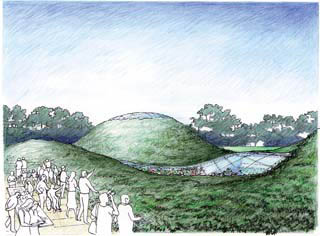 Our Executive Director, here at the California Academy of Sciences, recently informed the staff that we are not to provide guests with disposable bottles of water, because it's not sustainable. This simple, but challenging, edict got me thinking about the irony of being green. After all, the Earth has been green for billions of years.
Our Executive Director, here at the California Academy of Sciences, recently informed the staff that we are not to provide guests with disposable bottles of water, because it's not sustainable. This simple, but challenging, edict got me thinking about the irony of being green. After all, the Earth has been green for billions of years.
Even human commerce was green until about 150 years ago, when milkmen automatically recycled glass milk bottles. Almost all food was locally grown. Horses and cows ate grass and produced manure, which farmers used to fertilize their crops. Then around the latter part of the 19th century, three inventions radically changed the virtuous cycles that informed our relationships with nature. These were: mass-produced gasoline powered vehicles, plastics, and nitrogen fertilizer.
Gasoline powered vehicles allowed vast amounts of products to be transported quickly over long distances via land, sea or air. A variety of containers made of cheap plastic gave rise to the mentality of disposability. Nitrogen fertilizers helped food grow in large enough quantities to fuel an incredible human population explosion. Now here we are, painted into a corner by our progress.
We are in a war for the oil that keeps engines pumping out greenhouse gases so that we can eat our favorite produce all year long. That same oil is used to create plastic that supports the convenience mentality of 6 billion people. It fills up our dumps, and in many third world countries, covers the ground in mounds. A huge amount of that plastic also makes it into the ocean where it kills hundreds of millions of animals every year. Meanwhile, the nitrogen fertilizer used to grow the food that supports the world's population is now the top polluter of our oceans, and is creating huge, dead zones in places like the Gulf of Mexico.
The lesson to be learned here is that nature set the bar for elegant technology solutions and we need to emulate it. Our technologies need to give back to the environment, not just take from it.
